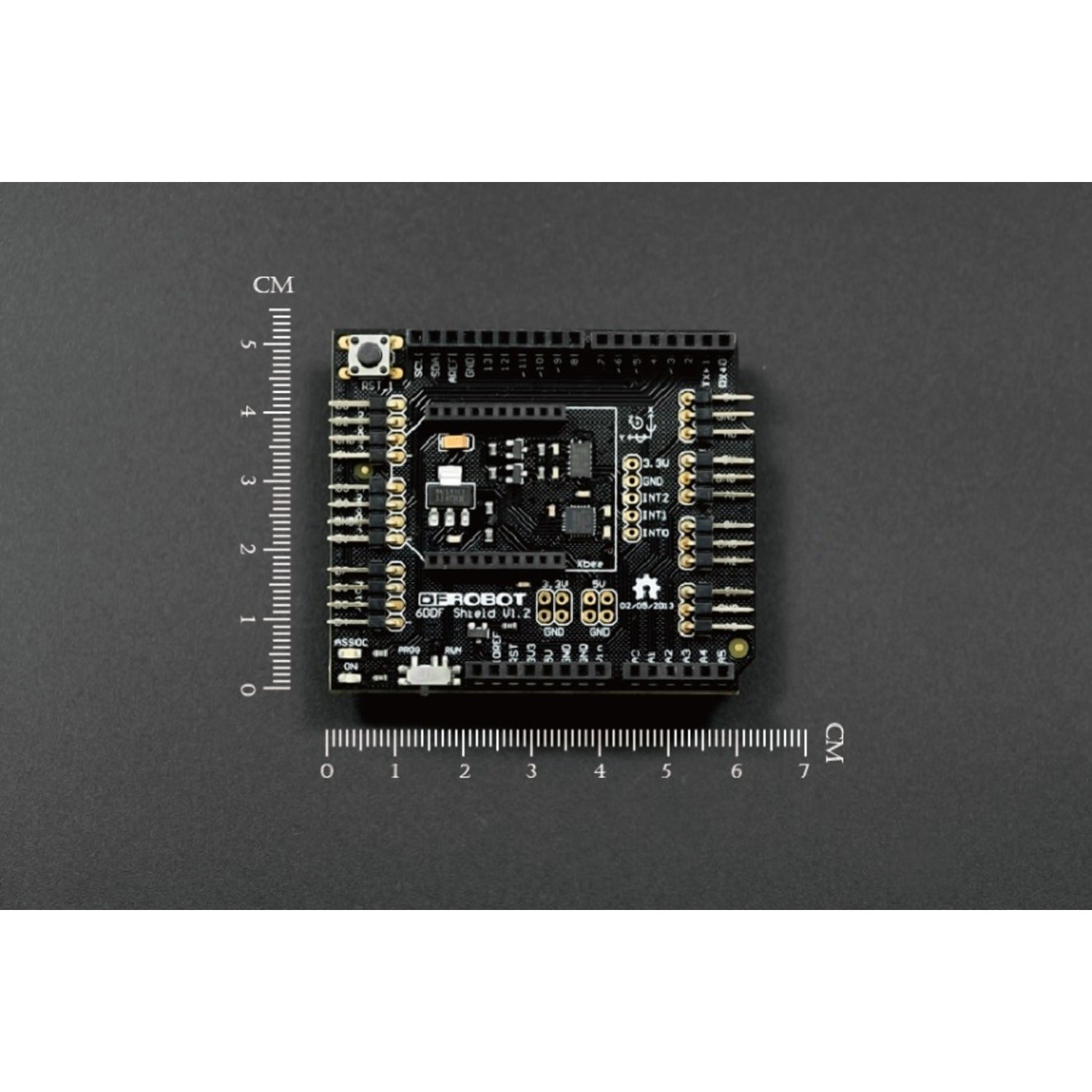This 6 DOF IMU shield for Arduino is a great addition to your projects. It uses the ADXL345 accelerometer and the ITG - 3200 gyro, providing accurate motion sensing. It also has an embedded XBee socket, making it ideal for projects that require Bluetooth, Wi - Fi, or Zigbee wireless communication. The shield extends a pair of encoders, a motor driver interface, and 4 analog input connectors. It's designed to work on balancing robots or mobile platforms, where the encoder and motor driver interfaces are essential. Simply plug rotation sensors into the analog connectors to easily adjust system parameters and debug the platform. Applications include motion - enabled game controllers, personal navigation devices, balancing robots, and industrial instrumentation. Specifications: Working voltage of 5V and 3.3V, I2C (SCL, SDA) interface, various connectors for encoders, motor drivers, and analog inputs. It embeds the ADXL345 accelerometer and the ITG - 3200 gyro, directly supports XBee and XBee - form - factor Wi - Fi, Bluetooth, and RF modules, and is compatible with Arduino Uno and DFRduino UNO. There's a programming switch to disable wireless communication during programming. It measures 65x55x20mm (2.56x2.17x0.79'). Version 1.2 has some compatibility issues, not being compatible with Arduino boards older than R3 (check wiki for fix) but is compatible with Leonardo and latest Arduino boards. Documents available are Wiki, library, ADXL345 Datasheet, ITG3205 Datasheet, Processing code, Schematic, and a Zip file with all of these. Shipping includes 1 piece of 6 DOF shield v1.1.


Using this 6 DOF IMU shield for Arduino is easy. First, make sure your Arduino board is compatible with the shield. If you're using version 1.2, note that it won't work with Arduino boards older than R3, but you can check the wiki for a fix. Connect the shield to your Arduino. You can use it on balancing robots or mobile platforms. For the encoder and motor driver interfaces, just connect the relevant components to the specified pins. To get sensor data, plug rotation sensors into the 4 analog input connectors. This will help you adjust system parameters and debug the platform easily. When programming, use the programming switch to disable wireless communication. Keep in mind the working voltage requirements of 5V and 3.3V. For maintenance, keep the shield clean and free from dust. If you encounter any issues, refer to the available documents like the datasheets and the wiki.